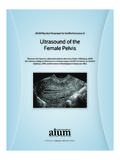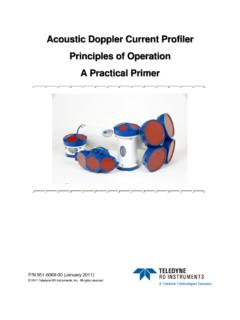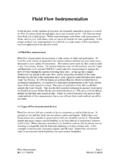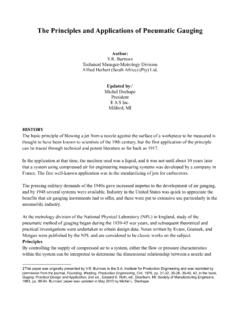Transcription of TAXONOMIES OF INPUT - Bill Buxton
1 Developing a Taxonomy of INPUT Chapter 4: TAXONOMIES OF INPUT INTRODUCTION Traditionally, INPUT devices have been discussed in terms of their mechanical and electrical properties (Foley & Van Dam, 1982; Sherr, 1988). Discussions centre on "joysticks," "trackballs," and "mice," for example. Several studies have attempted to evaluate the technologies from the perspective of human performance. Many of these are summarized in Greenstein and Arnaut (1988) and Milner (1988). A common problem with such studies, however, is that they are often overly device-specific. While they may say something about a particular device in a particular task, many do not contribute significantly to the development of a general model of human performance.
2 (There are exceptions, of course, such as Card, English and Burr, 1978.) With the objective of isolating more fundamental issues, some researchers have attempted to categorize INPUT technologies and/or techniques along dimensions more meaningful than simply "joystick" or "trackball." The underlying assumption in such efforts is that better abstractions can lead us from phenomenological descriptions to more general models, and hence better analogies. THE STANDARDS EFFORT AND LOGICAL DEVICES Just as machine independent compilers facilitated porting code from one computer to another, device independent programming constructs have been developed for I/O.
3 With INPUT , the principle idea was to recognize that all devices more-or-less reduced to a small number of generic or virtual devices. For example, an application can be written in a device-independent way such that it need not know if the source of text INPUT is via a keyboard or a speech-recognition system. All the application need know is that text is being INPUT . Similarly, the application need not require any information about what specific device is providing location information (in pointing, for example). All that it needs to know is what the current location is. Haptic INPUT 4 January, 2009 Buxton Developing a Taxonomy of INPUT ** fix ** This idea of device independent, logical , or virtual INPUT devices was first done for the GPGS graphics system in the early 1970 s and published1 by Caruthers, Van den Bos & Van Dam, A.
4 (1977) and has been discussed, by among others, discussed by Foley and Wallace (1974), Wallace (1976), Newman (1968), and Rosenthal, Michener, Pfaff, Kessener and Sabin (1982). It was refined and integrated into the standardized graphics systems ( GSPC, 1977; GSPC, 1979; ISO, 1983). Within the GKS standard (ISO, 1983), the virtual devices are defined in terms of the values that they return to the application program. The virtual devices for INPUT in GKS are: Locator: a pair of real values giving the coordinate of a point in world coordinates. Stroke: a sequence of x/y coordinates in world coordinates.
5 Valuator: a single number of the type real. Pick: the name of a segment. String: produces a string of characters. Choice: returns a non-negative integer defining one of a set of alternatives. For the designer of user interfaces, the main advantage of device independent graphics has been that one can experiment with different devices without normally having to modify the applications code. All that needs to be changed (from the software perspective) is the actual device driver. The application doesn't care what driver is being used for a particular device because the standard is defined in terms of the calling protocol and the number and type of parameter returned.
6 Because there is one logical device for each generic class of INPUT , the beginnings of a taxonomy based on use is introduced. Device independent graphics has had an important impact on our ability to rapidly prototype user interfaces. This is a subject discussed in more detail in Chapter 11 of Baecker and Buxton (1987), and is largely motivated by the iterative design methodologies discussed in Chapter 10 of Baecker and Buxton (1987). While device independence has been a real benefit, it has also led to some problems. The reason is that some practitioners have confused technical interchangeability with functional interchangeability.
7 Just because I can substitute a trackball for a mouse does not mean that the resulting user interface will still be satisfactory. As we have seen, devices have idiosyncratic properties that make them well suited for some tasks, and not for others. Further discussion of issues relating to device-independent graphics can be found in Baecker (1980). GENERIC TRANSACTIONS: FOLEY, WALLACE & CHAN Foley, Wallace, and Chan (1984) took the notion of logical devices, and cast them more in the human perspective than that of the application software. They identified six generic transactions (which were more-or-less the counterparts of the GSPC logical devices) that reflected the user's intentions: Select an object 1 Andy at Nimeghen, Peter Veeman at Delpht and Charles Lang , Cambridge University CAD Centre.
8 See Dan Bergeron at New Hampshire for info on team in Delft who helped. Haptic INPUT 4 January, 2009 Buxton Developing a Taxonomy of INPUT Position an object in 1, 2, 3 or more dimensions; Orient an object in 1, 2, 3 or more dimensions; Ink, , draw a line; Text, , enter text; Value, , specify a scalar value. They then proceeded to enumerate a relatively comprehensive set of techniques and technologies capable of articulating each of these basic primitives. PRAGMATIC CONSIDERATIONS: Buxton Buxton (1983) introduced a taxonomy of INPUT devices that was more rooted in the human motor/sensory system.
9 The concern in this case was the ability of various transducers to capture the human gesture appropriate for articulating particular intentions. Consequently, INPUT devices were categorized by things such as the property sensed (position, motion, or pressure), the number of dimensions sensed, and the muscle groups required to use them. The examples of the previous section help us explore how different devices lend themselves to different tasks. In this section, we want to develop a categorization of INPUT devices which is based on the properties that cause these differences. Our approach to this is through the tableau, shown in Figure 1.
10 There is a hierarchy of criteria according to which devices are Haptic INPUT 4 January, 2009 Buxton Developing a Taxonomy of INPUT organized in this table. The tableau is limited, and only considers continuous, manually operated devices. Hence, the first two (implicit) organizational criteria are: Continuous vs. discrete: continuous Agent of control (hand, foot, voice,): hand. The table is divided into a matrix whose primary partitioning into rows and columns delimit What is being sensed (position, motion or pressure), and The number of dimensions being sensed (1, 2 or 3) These primary partitions are delimited by solid lines.







